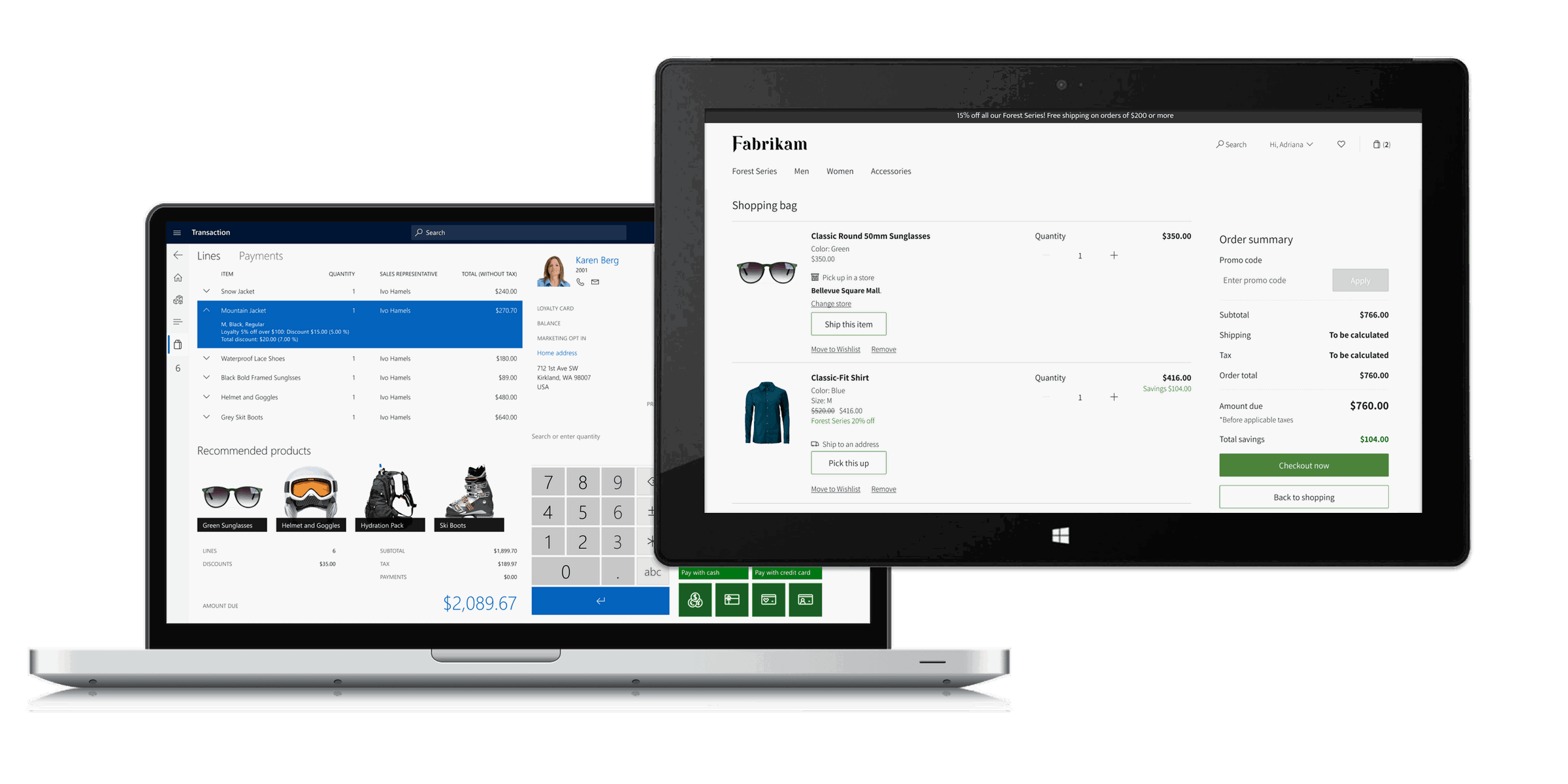
Microsoft Dynamics 365 Commerce: Complete Buyer's Guide
Enterprise-grade AI-powered order management solution
Microsoft Dynamics 365 Commerce is Microsoft's enterprise-grade AI-powered order management solution that unifies omnichannel retail operations through Azure AI and Copilot integration, targeting mid-market to enterprise retailers seeking comprehensive B2B/B2C capabilities.
Market Position & Maturity
Market Standing
Microsoft Dynamics 365 Commerce occupies a premium enterprise segment competing primarily with SAP Commerce Cloud and other comprehensive platforms rather than specialized point solutions.
Company Maturity
Company maturity benefits from Microsoft's established enterprise presence and substantial Azure infrastructure investment.
Growth Trajectory
Growth trajectory reflects Microsoft's broader cloud adoption trends, with the platform gaining traction among enterprise retailers with existing Microsoft ecosystem investments.
Industry Recognition
Industry recognition stems primarily from Microsoft's overall enterprise software reputation rather than specific retail technology awards or analyst recognition.
Strategic Partnerships
Strategic partnerships center on Microsoft's extensive partner ecosystem, enabling integration with existing Azure/Office 365 environments and leveraging Microsoft's enterprise sales channels.
Longevity Assessment
Longevity assessment benefits from Microsoft's corporate stability and continued cloud investment, providing strong evidence for long-term platform availability and development.
Proof of Capabilities
Customer Evidence
Kent Outdoors achieved comprehensive operational transformation by consolidating 11 e-commerce sites and eliminating duplicate pricing and inventory management processes, resulting in a 'record sales year' with measurable operational efficiency gains.
Quantified Outcomes
AI-driven demand forecasting with documented 25% reductions in forecasting errors, addressing critical inventory management challenges that affect 38% of customers who abandon brands with poor delivery experiences.
Case Study Analysis
Vera Bradley proves practical AI application through Copilot deployment helping store associates 'spark customer conversation', demonstrating how the platform's AI capabilities translate into tangible customer engagement improvements.
Market Validation
Market validation emerges through customer retention and expansion patterns, with successful implementations leading to record sales performance and operational efficiency gains.
Competitive Wins
Competitive wins appear concentrated in scenarios where Microsoft ecosystem integration advantages outweigh alternative solutions' specialized capabilities.
Reference Customers
Reference customers span multiple retail segments, with enterprise retailers demonstrating successful implementations across B2B, B2C, and hybrid environments.
AI Technology
Microsoft Dynamics 365 Commerce leverages Azure AI and Copilot integration to deliver comprehensive retail operations management through advanced artificial intelligence capabilities.
Architecture
Architecture and deployment follow Microsoft's cloud-first approach through Azure infrastructure, enabling real-time inventory synchronization across multiple sales channels and unified B2B/B2C operations.
Primary Competitors
SAP Commerce Cloud offering comparable enterprise AI capabilities, specialized solutions like Zoho Inventory at $99/month, and custom-developed platforms providing greater customization flexibility.
Competitive Advantages
Proven Microsoft ecosystem integration reducing implementation costs for existing Azure/Office 365 users, generative AI capabilities through Copilot for content generation and customer insights, and documented enterprise customer success in complex B2B/B2C environments.
Market Positioning
Market positioning places the platform as a comprehensive enterprise solution requiring substantial investment commitment rather than an accessible mid-market option.
Win/Loss Scenarios
Win/loss scenarios favor Microsoft Dynamics 365 Commerce when organizations have existing Microsoft ecosystem investments, require unified B2B/B2C operations, and can commit substantial implementation resources.
Key Features

Pros & Cons
Use Cases
Integrations
Featured In Articles
Comprehensive analysis of Order Management for Ecommerce for Ecommerce businesses and online retailers. Expert evaluation of features, pricing, and implementation.
How We Researched This Guide
About This Guide: This comprehensive analysis is based on extensive competitive intelligence and real-world implementation data from leading AI vendors. StayModern updates this guide quarterly to reflect market developments and vendor performance changes.
58+ verified sources per analysis including official documentation, customer reviews, analyst reports, and industry publications.
- • Vendor documentation & whitepapers
- • Customer testimonials & case studies
- • Third-party analyst assessments
- • Industry benchmarking reports
Standardized assessment framework across 8 key dimensions for objective comparison.
- • Technology capabilities & architecture
- • Market position & customer evidence
- • Implementation experience & support
- • Pricing value & competitive position
Research is refreshed every 90 days to capture market changes and new vendor capabilities.
- • New product releases & features
- • Market positioning changes
- • Customer feedback integration
- • Competitive landscape shifts
Every claim is source-linked with direct citations to original materials for verification.
- • Clickable citation links
- • Original source attribution
- • Date stamps for currency
- • Quality score validation
Analysis follows systematic research protocols with consistent evaluation frameworks.
- • Standardized assessment criteria
- • Multi-source verification process
- • Consistent evaluation methodology
- • Quality assurance protocols
Buyer-focused analysis with transparent methodology and factual accuracy commitment.
- • Objective comparative analysis
- • Transparent research methodology
- • Factual accuracy commitment
- • Continuous quality improvement
Quality Commitment: If you find any inaccuracies in our analysis on this page, please contact us at research@staymodern.ai. We're committed to maintaining the highest standards of research integrity and will investigate and correct any issues promptly.